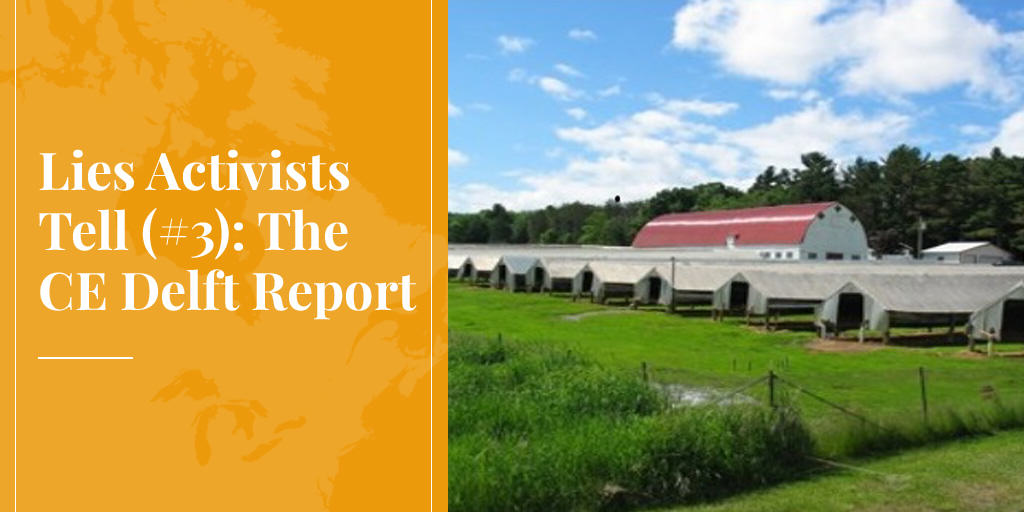
In their attempt to discredit the environmental credentials of the fur trade, activists often cite a “life cycle assessment” (LCA) produced by CE Delft, a Dutch research consultancy (see: NOTES, below). This study (The environmental impact of mink fur production, Delft, January 2011) found that: “Compared with textiles (including polyester, cotton, wool, and polyacrylic ‘fake furs’), fur has a higher impact on 17 of the 18 environmental themes, including climate change, eutrophication and toxic emissions.”
Because these claims, if true, would contradict our belief that fur is an environmentally responsible choice, we decided to take a closer look. It is lucky that we did!
Stated simply, we found that CE Delft’s negative assessment of fur results from several methodological assumptions or questionable statistics.
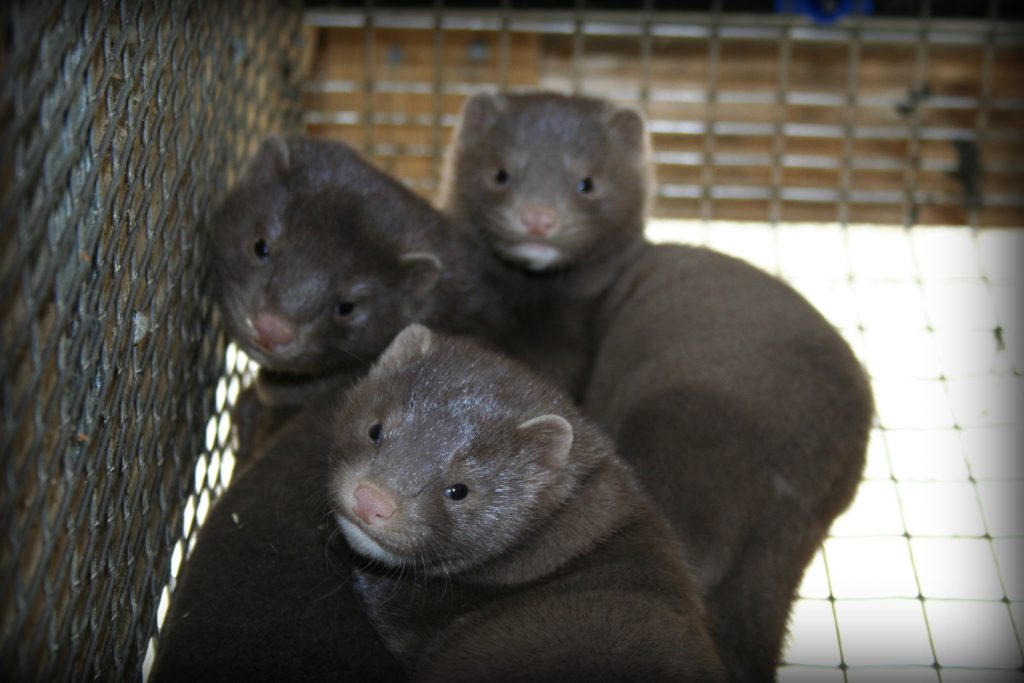
Among the most important concerns:
CE Delft used a significantly inflated figure (almost double our findings!) for the amount of feed required to produce farmed fur.
- They ignored the fact that, because this feed is composed mostly of wastes from our food-production system, it could be considered an environmental benefit rather than a cost.
- Mink manure made from soiled straw bedding and carcasses could also be assigned environmental credits rather than costs – for replacing synthetic fertilizers and fossil fuels.
- Not least important, CE Delft discounts the environmental benefits of real fur apparel lasting much longer than fake furs or other textiles, i.e., if a real mink last five time longer than a fake fur coat, its environmental impact should be compared with that of five fakes, not one!
Let’s look at this CE Delft report in more detail …
- CE Delft (“Committed to the Environment”) describes itself as an “independent research and consultancy organization specialized in developing structural and innovative solutions to environmental problems. CE Delft’s solutions are characterized in being politically feasible, technologically sound, economically prudent and socially equitable.” [Socially equitable? Except for mink farmers, it would seem!]
- This study, was commissioned by three European “animal-rights” groups that strongly oppose the use of fur: the Dutch Bont voor Dieren, the Belgian GAIA (Global Action in the Interest of Animals) and the Italian Lega Antivivisezione LAV). (No comment!)
- Turning to the substance of this study: the feed used to produce mink is identified as one of two elements that account for most of the environmental costs of fur. This claim, however, is based on several assumptions:
– CE Delft sets out to compare 1 kilogram (kg) of mink fur with 1 kilogram of fake fur and other textiles. To this end, they propose that 11.4 mink pelts are needed to produce 1 kg of fur, and that each animal consumes close to 50 kg of feed (including a share for the mother). From these assumptions, CE Delft concludes that 563 kilograms of feed are required to produce one kilogram of fur (49.4 kg of feed x 11.4 pelts/kg of fur.), and this is the figure on which they base all their subsequent calculations of environmental impacts. [p.6]
– Our own survey of North American and European farmers – including statistics published by the Danish Faculty of Agricultural Science, Aarhus University (2010) — suggests that it actually requires from 38-45 kg – or an average of about 41.5 kg of feed to produce a mink pelt. CE Delft’s figure for how many pelts are required to supply a kilogram of fur is also higher than what we found — perhaps because their calculation was apparently based on two sample pelts provided by the Dutch activist group Bont voor Dieren, which may not represent a true average size? Using the same methodology as CE Delft but with a large data set provided by European fur auctions, we find that 1 kg of fur represents about 7.75 pelts – not 11.4, as CE Delft proposes. If an average of 41.5 kg of feed is required to produce one mink pelt, multiplying this by 7.75 pelts indicates that 322 kg of feed would be required to produce 1 kg of fur – i.e., a little more than half (57%) the amount of feed used by CE Delft in their calculations. This discrepancy alone explains much of the higher environmental impact they attribute to real fur.
– CE Delft also assumes that mink food is comprised of 70% chicken waste and 30% fish offal. But feed composition varies according to local availability. Thus, in Denmark (which produces three times more mink than Holland, where CE Delft is based) feed is more commonly composed of 80% fish offal and 20% chicken waste. But the environmental cost of fish offal is much lower than that of chicken wastes. In fact, in a 2013 follow-up study, CE Delft acknowledged that a mink diet based on fish rather than chicken would lower environmental impacts by 30%. [See, #6, below.]
– Most important of all: other uses would have to be found for this meat and fish waste — or it would go into landfills or be incinerated — if mink weren’t eating it. It could therefore be argued that an environmental CREDIT should be applied to mink food production, since the environmental costs of disposing of these meat and fish wastes are avoided.
In summary: Since mink feed is the predominant factor in 14 of the 18 environmental impacts that CE Delft considered, their assumptions raise serious questions about the credibility of their findings.
4. The second major source of environmental impacts identified by CE Delft is emissions associated with mink manure and other farm wastes.
Here again, CE Delft ignored the subsequent use of this manure and the environmental CREDITS that could be associated with reducing the need for artificial fertilizers when mink manure and other wastes (soiled straw bedding) are properly managed and applied to local agricultural lands. Mink carcasses and wastes are now also used to produce biofuels, thereby reducing the need for fossil fuels.
5. Finally, the way in which CE Delft framed the scope of its study has skewed its findings:
CE Delft did not do a complete, “cradle-to-grave” Life Cycle Assessment in its 2011 study. Instead, it did a partial (“cradle-to-gate”) analysis which included the environmental costs of raising of the mink on the farm, pelting, transportation, auction sale, and processing (dressing) – but stopped at the point when the fur would be made into a garment. CE Delft therefore completely ignored one of the most important environmental attributes of fur apparel, i.e., that it is much longer-lasting than most other clothing materials. Clearly, it matters whether the environmental costs of production are amortized over 5-10 years (fake fur coats) or 40, 50 or more years (real fur coats)!
6. To address this blatant methodological flaw, CE Delft published a follow-up study in June 2013 (“Natural mink fur and faux fur products, an environmental comparison”). This study completed the “life cycle” by assessing the manufacture, use/maintenance and ultimate disposal of real and fake (polyacrylic) furs – but again concluded that real fur apparel has a greater environmental cost than fakes. Here’s why:
– The new study used the same assumptions and calculations about mink feed production and manure/waste management that were presented in the first study – and these two elements still accounted for most of the environmental impacts.
– Furthermore, to blur the environmental advantages of fur apparel lasting much longer than fakes, CE Delft proposed several “scenarios”. It acknowledges that real fur may last as much as five times longer than fake, e.g., 30 years vs 6, as proposed in an LCA prepared for the International Fur Federation [DSS, 2011). But then it backtracks, suggesting that “it is conceivable that the lifespan is determined by the change in fashion; in this case the lifespan of a natural fur coat and a faux fur coat could be equal.” (p.5) This statement reveals ignorance or deviousness:it doesn’t seem to know (or doesn’t want its readers to know?) that fur apparel can be taken apart and completely reassembled (“remodeled”) as fashions change. This is one of fur’s important environmental attributes; no one throws away a fur coat because styles change. In fact, with the current revival of fur in fashion, retailers are busy remodeling coats their customers bought during the last fur boom, in the 1970s and 1980s, i.e. coats that are already 30–40 years old!
– CE Delft also claims that the longevity of real fur coats may be off-set by the environmental costs of cold storage during the off-season. They suggest that 30 years of seasonal cold storage would have more impact on climate change, for example, than the entire process of raising the mink, processing the pelts and producing the coat! (Figure 7, p. 34.) The energy costs of fur storage as estimated by CE Delft, however, are considerably higher than figures collected from real fur storage facilities. More to the point, most fur coats are simply not kept in special cold-storage vaults, especially now that many homes are air-conditioned through the summer months. Furthermore, off-season storage of furs has always been less common in Europe than in North America, and is almost non-existent in Russia and the booming new markets of Asia.
– More fundamentally: we could question CE Delft’s core contention that real and fake fur coats can be compared at all. The fact that people are prepared to pay considerably more money for real fur coats than for fakes would seem to confirm that they have different qualities and “value”.
– Finally, we note that neither CE Delft study appears to have been submitted for peer review.
In conclusion, CE Delft’s often-quoted claim that “fur has a higher environmental cost than fakes” appears to be based on a series of questionable assumptions and calculations. CE Delft is cautious in how it presents its findings, especially in its 2013 study where it provides a number of different “scenarios” to account for the uncertainties it acknowledges. Activists, however, show no such caution when they cite these findings.
The biggest threat to climate change, in fact, may be activist “hot air”!
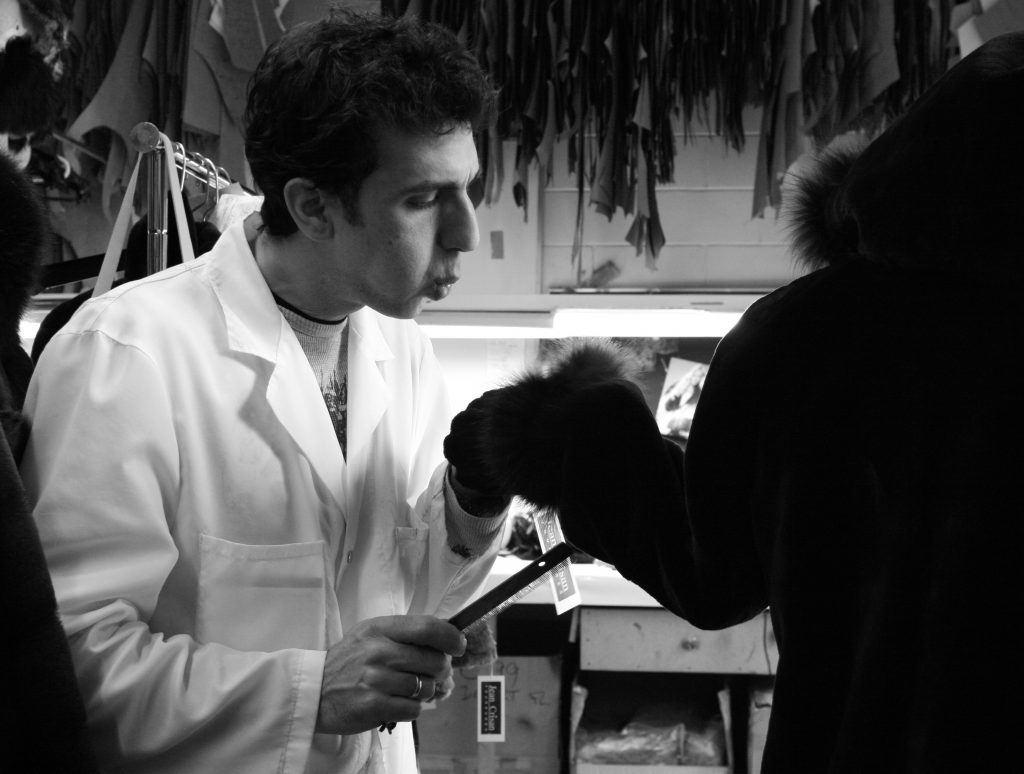
Related Reading:
- Take the cotton out of your ears, please by Mick Madsen, Fur for Thought, 21 August 2013.
- **************************
NOTES:
Here are a few examples where the “CE Delft” study is cited in an attempt to discredit the environmental credentials of the fur trade:
1. “A study by consultancy firm CE Delft in 2011 found that the impact of fur production on 17 out of 18 environmental issues – such as climate change, ozone pollution and soil acidification – was found to be more harmful than when compared to common textiles.” From Cruel or cool? Worldwide sales of fur top £10 billion by Hayley Leaver, Metro.co.uk, 22 May 2013.
2. “PETA points to a 2011 study by a Netherlands consultancy firm CE Delft which compared the impact of fur production with common textiles on 18 different environmental issues such as climate change, ozone pollution, soil acidification and water and land use. ‘For 17 of the 18 issues, fur was found to be much more harmful than common textiles,’ says Ben Williamson, a spokesperson for PETA.” From Is the fur trade sustainable? By Tansy Hoskins, The Guardian, 29 October 2013.
3. “A 2011 study by Dutch independent researchers CE Delft calls fur production worse than textile production, in terms of environmental degradation. Carcinogens like chromium and formaldehyde, employed in dressing and dyeing processes, compromise fur’s biodegradability, not to mention ecological stability.” From Fur is Green. True or Faux? By Jody McCutcheon, Eluxe Magazine, 22 February 2013.







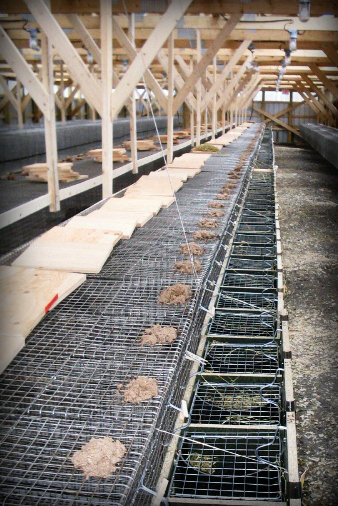
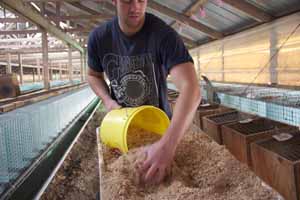





Thank you so much for providing a comparison that has substantiated my continued support of fur production and has removed any guilt I may have had regarding such. But I do shop for vintage fur apparel that still has useful wear before considering new products that add to the impact. Vintage removes the demand for manufacturing a new item.